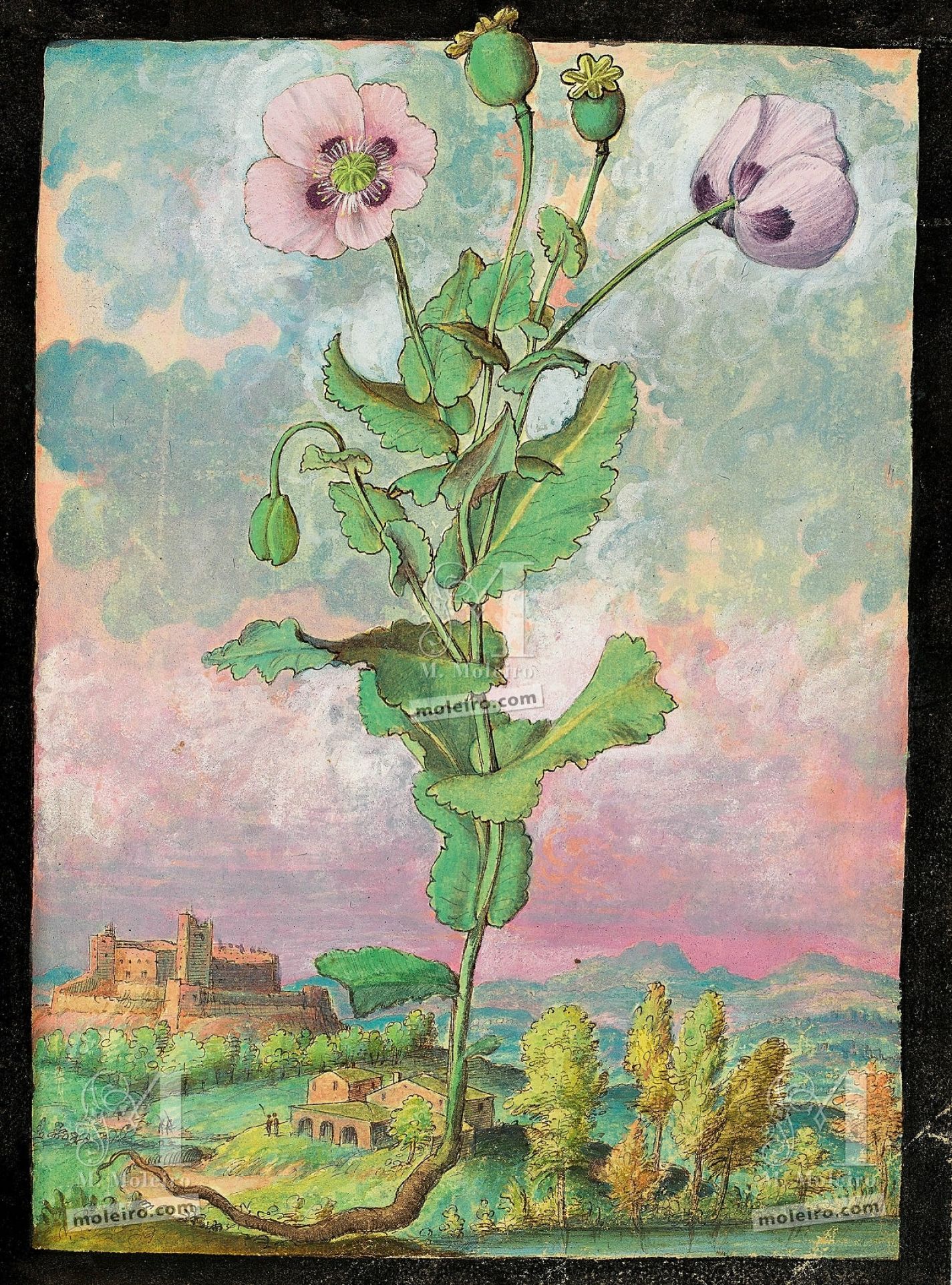This plant, cultivated since ancient times and found wild throughout Europe, probably native to the south, is often found in uncultivated fields. The white petals of its flowers sometimes have a black spot at the base like those of the corn poppy. The unripe fruit or capsule produces a whitish liquid gathered from shallow, diagonal cuts that secrete a latex called opium which solidifies and can be stored as tablets. Opium is a mixture of more than 25 different alkaloids, including morphine – named after Morpheus, the god of dreams and the son of Sleep, according to Ovid’s Metamorphoses – which has pain-relieving and numbing properties. Codeine is another alkaloid in this plant which is widely used. It acts directly on the part of the nervous system that regulates coughing, making it a highly effective cough remedy. All these alkaloids are addictive. The cooking water of the leaves of this plant also has calming and sedative properties. It is also an ornamental plant that was cultivated in gardens and orchards, which is why Dioscorides, who discusses this plant at length, calls it the “household poppy”, an adjective that conveys its importance and dissemination in the ancient world.
Ramón Morales Valverde
Real Jardín Botánico de Madrid
(Extract from the commentary volume of Mattioli's Dioscorides illustrated by Cibo)
